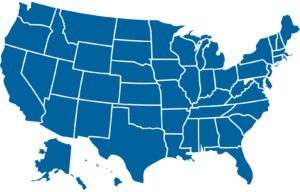2015 NBNA Legislative Agenda
27th NATIONAL BLACK NURSES Day on Capitol Hill
Patient Centered Care: Public Policy, Advocacy and Legislative Issues
1. Reauthorization of Title VIII, Nurse Education and Training Act
NBNA supports continued reauthorization of Nursing Workforce Development Programs contained in the Title VIII of the Public Health Service Act. Specifically, NBNA requests expanding federal appropriations to support professional nursing education and nurse faculty loan repayment programs. It continues to be the largest source of federal funding for nursing education, offering financial support for nursing education programs, individual students and nurses; thus increasing nursing education at all levels, from entrythrough graduate education. Title VIII also supports institutions that educate nurses for practice in rural and underserved areas.
Brief Background
The Nursing Workforce Development Programs (Title VIII, Public Health Service Act),enacted in 1964, was created in response to a shortage of health care providers.
- Title VIII programs focus on training advanced practice nurses, increasing the number of minority and disadvantaged students enrolling in nursing programs, and improving nurse retention through career development and improved patient care systems.
- Title VIII programs provide the largest source of federal funding specifically for nursing education support all levels of nursing education from entry level through graduate study.
Recommendations to Legislators
- Expand federal appropriations that will support professional nursing education and address the need for a highly educated nursing workforce
- Urge legislators to make funding for nurse workforce programs a priority in the FY 2015 Labor, Health and Human Services, and Education Appropriations process.
2. The Affordable Care Act and Your State
NBNA has been guided by the principle that African American nurses have the understanding, knowledge, interest, and expertise to make a significant difference in the health care status of African American communities across the nation. NBNA supports the central goal of the Affordable Care Act (ACA): to significantly reduce the number of uninsured by providing a continuum of affordable coverage options through Medicaid and new Health Insurance Exchanges. The ACA expands Medicaid coverage for most low-income adults to 138% of the federal poverty level (FPL) ($15,856 for an individual or $26,951 for a family of three in 2013).(Henry J. Kaiser Foundation)
Brief Background
Under provisions of the Affordable Care Act (ACA), a federal law, states have decision-making power over how they will enact many parts of the law that improve access to health care. For people who do not have health insurance from an employer, and must buy it on their own, states will either: 1) set up their own health insurance marketplace; 2) work with the federal government to co-run the state marketplace; or 3) opt to have the federal government run its marketplace.Disparities in the uninsured rate of Latinos and American Indians versus whites will narrow under Obamacare, but blacks won’t experience that effect to the same degree unless more states expand Medicaid, according to a new Urban Institute projection of the law’s impact two years from now. (Winfield Cunningham, 12/16) Go to: http://kff.org/state-health-marketplace-profiles/to find out YOUR State’s most current position.
Recommendations to Legislators
States who are participating in Medicaid Expansion
- NBNA supports Alternate Benefit plans that allow for essential health benefits and provides a continuum of care States that expand Medicaid have and had considerable flexibility in designing their Alternative Benefit Plans, which provides an opportunity for states to meet the health care needs of their expansion populations. Consumer advocates should be aware of their states plans and play an important role in the ongoing monitoring and evaluation to make surethat people in the Medicaid expansion population are getting coverage that meets their health care needs.
States who are not participating in Medicaid Expansion
- NBNA supports Medicaid Expansion to significantly reduce the number of uninsured and begin to close the gap on health disparities.
- States not participating will result in significant numbers of people who will remain uncovered. What is the State going to do for persons who are not in a coverage safety net?
3. Hospital Readmissions
To encourage hospitals to reduce avoidable readmissions, The Hospital Readmissions Reduction Program (HRRP), established by the Affordable Care Act and administered by CMS, was implemented. As of October 2012, the Centers for Medicare and Medicaid Services is reducing Medicare payments to hospitals that perform worse than the national average on risk-adjusted 30-day hospital readmission rates for patients discharged with acute myocardial infarction, heart failure or pneumonia. (PPACA 3025).
Brief Background
CMS defines readmission as an admission to a hospital within 30 days of a discharge from the same hospital. The excess readmission ratio includes adjustment factors that are clinically relevant including patient demographic characteristics, co-morbidities and patient frailty. CMS established a policy of using three years of discharge data and a minimum of 25 cases to calculate a hospital’s excess readmission ratio of each applicable condition(www.CMS.gov; www.NationalQualityForum.com). According to an analysis completed by Kaiser Health News, hospitals that serve large numbers of low-income patients are more likely to have the lowest adjustment factor and thus receive maximum penalties. Findings, by The Commonwealth Fund of publicly reported data also revealed that safety-net hospitals are more likely to have worse 30-day readmission rates and under the HRRP, will disproportionately affect these already financially strapped hospitals that provide care to large numbers of lo-income and other vulnerable populations.
Recommendations to Legislatures:
- Support and fund delivery system initiatives such as patient-centered medical homes and Community based transition programs and other care delivery models that encourage community collaboration
- Support local policies that enable safety-net hospitals, those that primarily serve underserved populations, to adapt and extend partnerships with community health centers, community agencies, Medicaid payers, and other stakeholders to more effectively address the complexities of the social and economic drivers of hospital utilization such as income and education
- Support and fund quality improvement initiatives that can reduce the rates of admission, such as effective discharge planning, care transitions model, education and home follow-up to include linkage programs needed for post hospital care.
4. Reauthorization of the Maternal, Infant and Early Childhood Visiting Program (MICEHV)
NBNA supports continued support and funding for the Maternal, Infant and Early Childhood Visiting Program (MICEHV). Specifically, NBNA requests the reauthorization of the MICEHV Program at the $15 billion cumulative level from 2015 through FY 2024.
Brief Background
- Under the provisions outlined in the Patient Protection and Affordable Care Act of 2010, the Maternal, Infant and Early Childhood Visiting Program (MICEHV) awards grants to states and tribal entities to fund and deliver evidenced based home visiting services.
Specifically the MIECHV awards:
- Serve pregnant women and families with children from birth to age 5.
- Focus on families at risk because the parents are younger than 21, low income, live in at-risk communities, have a history of child abuse or neglect or have other factors that can put healthy child development in jeopardy.
- Help to prevent child abuse and neglect.
- Are shaped by scientific research to improve the lives of children and families.
- Are administered by states and locally managed.
Families who participate in these programs receive education about childhood development and related services and are referred to health and human serves as needed. States and tribal entities who receive federal funding to implement these programs conduct local assessments to identify communities most in need and then select an evidence based home visiting program or models from a menu of 14 evidence-based home visiting models to implement in their respective communities. Thus, the Home Visiting program is locally designed and operated with the assistance of local agencies who help build infrastructure, train high quality home visiting workforce, establish reporting and accountability systems, facilitate service coordination as well as create referral networks. Home Visitation programs are especially important because of their potential to improve child health and development, increase child readiness for school improved parenting skills, foster family self-sufficiency as well as reduce child abuse and neglect. Congress first authorized the MIECHV program through the Patient Protection and Affordable Care Act. In March 2014, Congress reauthorized the program through March 31, 2015; building on the $1.5 billion previously provided.
Recommendation to Legislators
- Support the reauthorization of the Maternal, Infant and Early Childhood Home Visiting Program at the $15 billion cumulative level from 2015 through FY 2024.
- Support the President’s budget request to establish a long-term authorization through 2024, and at a cumulative level of $15 billion.
References for the Maternal, Infant and Early Childhood Home Visiting Program
Healthy Teen Network’s Public Policy Recommendation: Reauthorize the Maternal, Infant, and early Childhood Home Visiting Program
http://www.healthyteennetwork.org/sites/default/files/Healthy%20Teen%20Network%202014%20Public%20Policy%20Recommendation-MIECHV.pdf
U.S. Department of Health and Human Services/ The Maternal, Infant, and Early Childhood Home Visiting Program
Other Health Issues to consider highlighting during your visits:
United States’ Role in Shaping Global Health Policy: Implications for Health Care: Given the role of the U.S. in global health, the way in which the U.S. addresses these key issues will have major implications not just for U.S. standing in the world but also for the future trajectory of global health.
http://kff.org/global-health-policy/perspective/shaping-the-u-s-global-health-policy-agenda-key-considerations-for-the-future/
Viral Hepatitis Testing Act: More than 5 million Americans, or about 2 percent of the population, are chronically infected with hepatitis B, hepatitis C or both.Within the African American community, chronic liver disease, which is often hepatitis C-related, is a leading cause of death among people between the ages of 45 and 64. The Viral Hepatitis Testing Act introduced in the 113th Congress, would direct the Department of Health and Human Services to create a national system that promotes hepatitis B and C testing and treatment, as well as education for both the public and health care professionals.
Relevant Information Sources
www.kff.org Kaiser Family Foundation
www.commonwealthfund.org Commonwealth Foundation
www.cms.gov Centers for Medicaid and Medicare
www.aha.org American Hospital Association
www.aone.org American Organization of Nurse Executives
www.aamc.org/advocacy/hpnec Health Professions and Nursing Education Coalition
2/5/15





